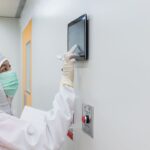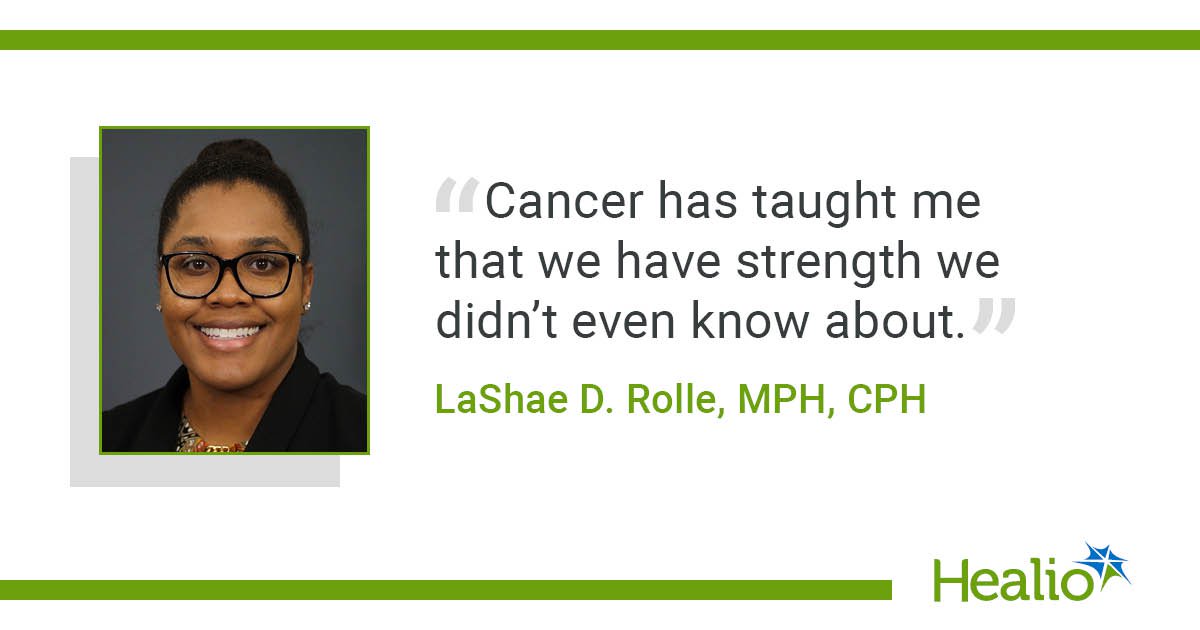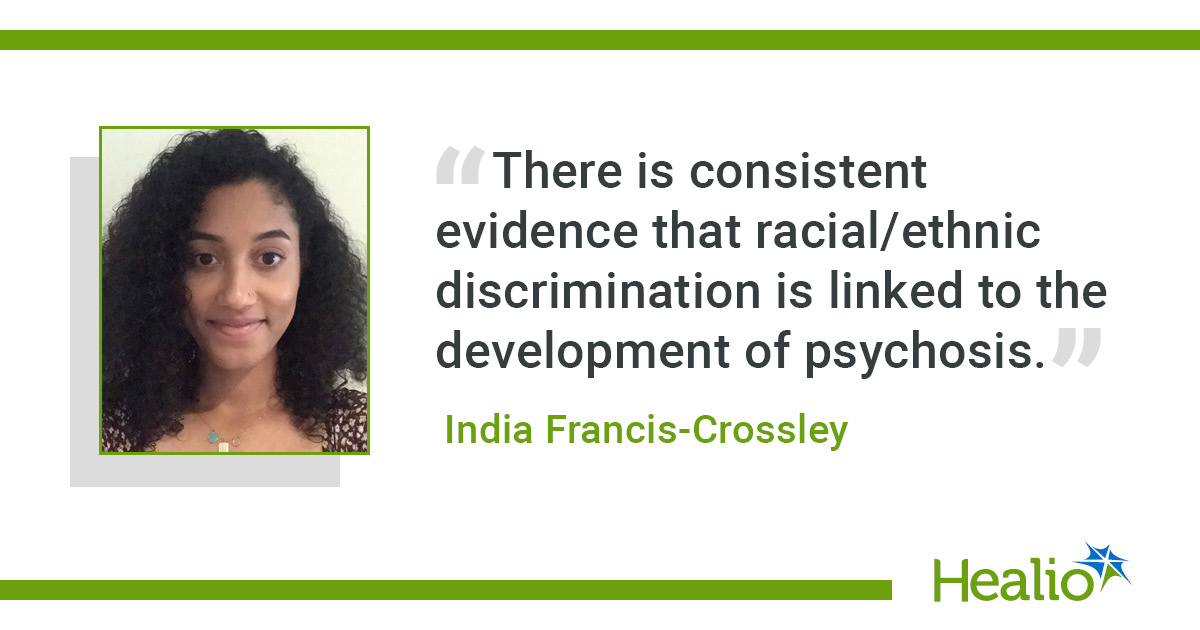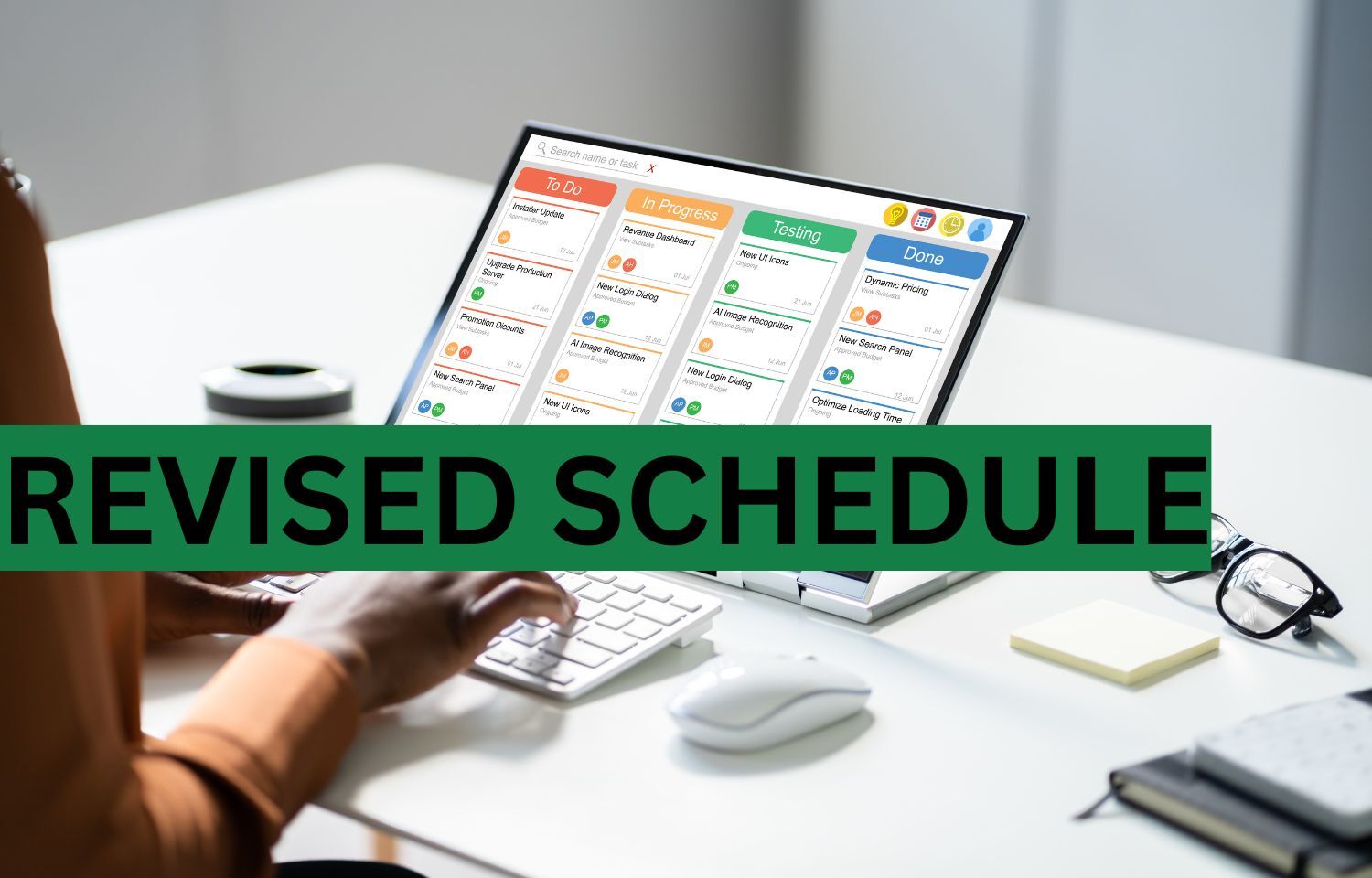August 19, 2025
6 min read
Key takeaways:
- National powerlifting champion retained approximately 90% of her strength during chemotherapy for breast cancer.
- Her experiences could inform exercise oncology research and clinical trials.
LaShae D. Rolle, MPH, CPH, a national powerlifting champion, went to the gym to train less than 24 hours after receiving her first chemotherapy treatment for multicentric breast cancer.
The PhD candidate at University of Miami had arranged her lifting schedule to coincide with her treatment. She originally planned a light lift.

However, after squatting “well over 200 pounds” — far short of her 441-pound personal record — Rolle thought she would take it up a notch and do a complete workout with all the big lifts.
“My body doesn’t feel anything,” Rolle said she thought to herself.
As soon as she finished her deadlift though, Rolle began feeling fatigued. She rushed home and became nauseous, too. Then she slept for the next 18 hours.
“I realized this is how my chemotherapy works,” Rolle said. “My chemotherapy does not kick in until the meds wear off a day later.”
She also realized the scientific value of her experience.
Rolle, who documented all her workouts, turned herself into a “science project.” She used her experiences to determine her best possible workout strategy during chemotherapy.
At the end of her treatment, she was lifting approximately 90% of her personal-best weights.
Her report could become a “framework” for developing clinical trials and exercise plans for patients with cancer, Tracy E. Crane, PhD, RDN, associate professor, co-leader of the cancer control research program and director of digital health and lifestyle medicine for cancer survivorship at Sylvester Comprehensive Cancer Center, part of the University of Miami Miller School of Medicine, told Healio.

Tracy E. Crane
“What I learned from LaShae is we really didn’t appreciate how impactful chemotherapy cycling and when to exercise after that could be,” Crane said. “We could have better response to the uptake of people being willing to exercise and trying to exercise if we could pay attention to chemotherapy cycling.”
‘I can build back’
Rolle discovered weightlifting during her time with the Texas A&M International University women’s basketball program.
“I noticed that I was stronger than a lot of the other people who were on my team and throughout the NCAA,” she said. “I was like, when I’m done, since I don’t want to run anymore, I’m just going to lift weights. I found powerlifting was something I could do to still have that competitive edge, because I’m a competitive person.”
In 2020, Rolle won the 198-pound open division title at the Florida State Championships, and did the same a year later at the National Championships.
Going into 2024, her personal bests included a 497-pound deadlift and 292-pound bench press.
However, her life changed in February of that year when she got diagnosed with hormone-positive, stage 2B multicentric breast cancer.
She had a mastectomy on her 27th birthday.
“It was so fast,” Rolle said. “Most of us, we’re not pros at this. That was my first treatment, and I was still in la la world, not fully understanding or grasping it. When I woke up, I looked down and I did not have anything there. It was flat on that one side, and it was like, OK, this is real.”
Concerns about her ability to powerlift constantly flooded her mind.
“When you look at the media, you tend to see patients with cancer in the weakest state of their life,” Rolle said.
She felt that way, as well, but also felt she was in her “strongest state” mentally. It did not take long following her surgery for that belief to take over.
“The moment I realized that I could become myself again was about 3 weeks after I had my mastectomy,” Rolle said. “I went to the gym and planned to do a squat workout. It went well. Then I said, ‘Let me try to bench.’ I was able to bench 135. Typically, when average people have a 45-pound plate on each side of the bench, that’s like, booyah. It’s a nice thing to get. When I was able to do that for multiple reps, and I felt I could go up, I was like, wow, I can build back.”
‘Experience is the best teacher’
Rolle’s typical powerlifting schedule consisted of 3 to 4 weeks of heavy training with a period of “deload,” where she would drop significant weight to let her body recover.
As she prepared for her first of four chemotherapy cycles in May 2024, she organized her lifting so her deload would occur during the week she received treatment.
She did not expect the first workout to take such a toll on her though.
“Experience is the best teacher,” Rolle said.
After her second cycle, Rolle rested for 5 days. When she returned to the gym, she had moderate fatigue and improved recovery after her lift. She waited 7 days after her third and fourth rounds of chemotherapy.
After her final cycle, she retained 87% of her best deadlift (430 pounds) and bench press (254 pounds) and 93% of her squat (408 pounds).
“It was trial and error because there were no other case studies or anything out there like this,” Rolle said. “I found that that was the best for me, and I was able to maintain quite a bit of strength.”
Her story became an inspiration on social media, and she got invited to share it on NBC’s “Today” show in October 2024.
“There’s a girl who was just diagnosed with cancer and she powerlifts, and she says she’s going to go through my whole profile,” Rolle said. “I recently saw she was in the gym lifting during chemotherapy. That was the whole point of this, and it makes me feel great that I’m able to inspire others who are just like me and who are going through this.”
Her impact could have even greater reach in the scientific community though.
‘OK to take a break’
Crane has spent decades investigating how modifiable behaviors such as diet, exercise and smoking cessation could impact cancer survivors.
She spent many years examining those behaviors in the post-treatment setting.
“Our motto at that point in time was just get through treatment, and then we’ll start,” Crane said. “There’s [also] been a wealth of work that says after diagnosis of cancer, you should be eating a healthy diet and exercising, and we can help prevent a recurrence.”
Over the past few years, more research has been done to investigate interventions during treatment. However, “we don’t have great guidelines yet to help guide us through this,” Crane explained.
“Could we be doing something during treatment that would improve our outcomes, our response to treatment, our symptoms during treatment such that people could get the full dose of treatment that was prescribed to maximize outcomes?” she asked.
Rolle’s case study, published in Lifestyle Medicine, has already informed how Crane and colleagues at Sylvester want to design clinical trials.
“When you’re trying to call [patients] or set up appointments on certain days, don’t even try during these certain times of the cycle,” Crane said. “Let’s wait, and let’s try to give that time to heal and recover. I think that was the most powerful lesson I took away from this.”
And though Crane has long advocated for exercise during treatment, seeing Rolle powerlift reinforced the notion of building muscle mass and strength.
However, she would not recommend everyone start powerlifting after a diagnosis of cancer.
“Anything you feel like you can do is better than doing nothing at all,” Crane said. “There’s no right or wrong answer. On days you don’t feel great, it’s OK to take a break. You don’t have to do this every single day. You’re going to learn these ebbs and flows, and when you do feel good, you take advantage of it. You exercise. Even going for a walk has a lot of benefit.”
‘We should never give up’
Rolle had bought a Susan G. Komen bike to support breast cancer research before she got diagnosed. She rode for 13 miles 2 weeks after learning of her own malignancy.
In February 2025, she went 39 miles in the Dolphins Cancer Challenge.
“It was incredible to just to know what she had gone through over that whole year,” said Crane, choking up at the memory. “To see her cross the finish line was like a top 10 memory. It was great.”
“The biggest thing I said to myself throughout treatment is I couldn’t give up on myself,” Rolle added. “I couldn’t surrender and not try to work out because my body never gave up on me. My body got hit with chemotherapy, surgery, radiation, all those major treatments, and it kept going. My body kept believing in me. Why would I give up on my body and not try to do things that are ‘hard?’”
That is the message she gives to everyone she talks to.
“No matter what it is you’re going through, I think we all can look deep inside ourselves, and we can pull out that strength,” Rolle said. “Cancer has taught me that we have strength we didn’t even know about. We have a lot of untapped things inside of us. We should never give up and keep believing in ourselves.”
For more information:
Tracy E. Crane, PhD, RDN, can be reached at tecrane@med.miami.edu.
LaShae D. Rolle, MPH, CPH, can be reached at lashaerolle@miami.edu.








